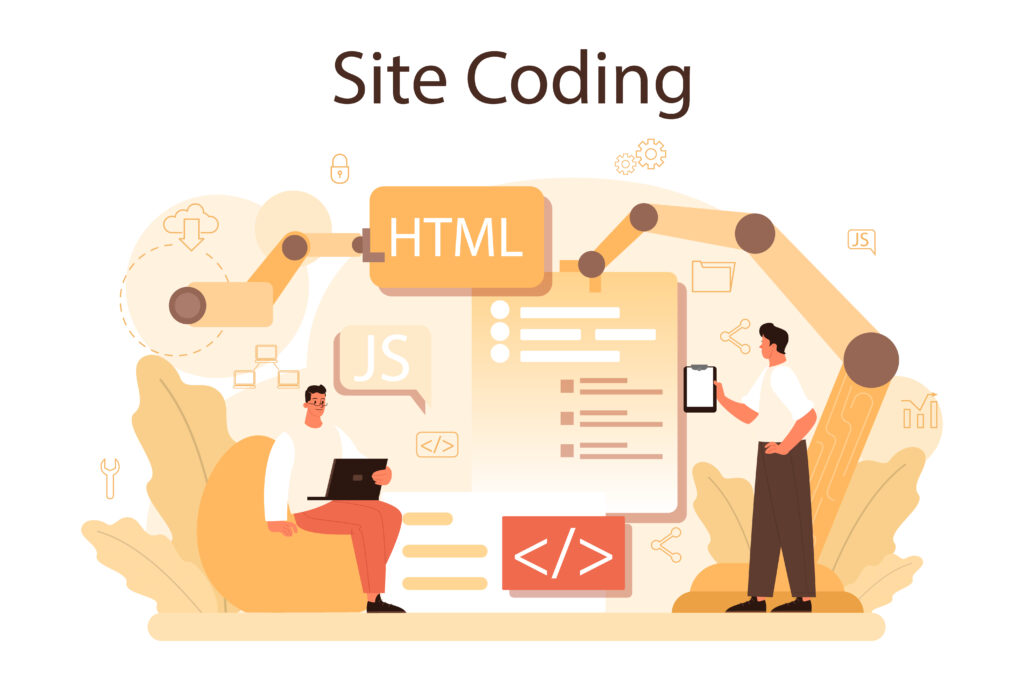HTML Basics for Creating Your First Website
Creating a website can seem daunting if you’re new to web development, but learning the basics of HTML (HyperText Markup Language) is a great place to start. HTML is the foundational language used to structure and present content on the web. In this blog post, we’ll cover the essential elements and principles of HTML to get you started on building your first website.
What is HTML?
HTML stands for HyperText Markup Language. It is the standard language used to create web pages. HTML uses tags to structure text, images, and other content for display in web browsers. These tags tell the browser how to render the content on the page.
The Structure of an HTML Document
Every HTML document has a basic structure that includes the following components:
- Doctype Declaration: The
<!DOCTYPE html>declaration defines the document type and version of HTML being used. It ensures that the browser interprets the document correctly. - HTML Tag: The
<html>tag wraps the entire content of the HTML document. - Head Section: The
<head>section contains meta-information about the document, such as the title, character set, and links to stylesheets and scripts. - Body Section: The
<body>section contains the actual content of the web page that will be displayed in the browser.
<!DOCTYPE html>
<html lang="en">
<head>
<meta charset="UTF-8">
<meta name="viewport" content="width=device-width, initial-scale=1.0">
<title>My First Website</title>
</head>
<body>
<h1>Welcome to My Website</h1>
<p>This is a paragraph of text on my website.</p>
</body>
</html>Basic HTML Tags
HTML tags are used to define different elements on a web page. Tags are enclosed in angle brackets (< >). Most tags have an opening tag and a closing tag, with the content in between. Here are some of the most commonly used HTML tags:
- Headings: Headings are defined with the
<h1>to<h6>tags, with<h1>being the highest (or most important) level and<h6>the lowest
<h1>This is a Heading 1</h1>
<h2>This is a Heading 2</h2>Paragraphs: Paragraphs are defined with the <p> tag.
<p>This is a paragraph.</p>
Links: Links are defined with the <a> tag. The href attribute specifies the URL of the page the link goes to.
<a href="https://www.example.com">Visit Example.com</a>Images: Images are defined with the <imgImages: Images are defined with the <img> tag. The src attribute specifies the path to the image, and the alt attribute provides alternative text for the image.> tag. The src attribute specifies the path to the image, and the alt attribute provides alternative text for the image.
<img src="image.jpg" alt="Description of image">Lists: There are two types of lists: ordered lists (<ol>) and unordered lists (<ul>). List items are defined with the <li> tag.
<ul>
<li>Item 1</li>
<li>Item 2</li>
<li>Item 3</li>
</ul>
<ol>
<li>First item</li>
<li>Second item</li>
<li>Third item</li>
</ol>
Tables: Tables are defined with the <table> tag. Table rows are defined with the <tr> tag, and table headers and cells are defined with the <th> and <td> tags, respectively.
<table>
<tr>
<th>Header 1</th>
<th>Header 2</th>
</tr>
<tr>
<td>Cell 1</td>
<td>Cell 2</td>
</tr>
</table>Attributes
Attributes provide additional information about HTML elements. They are always included in the opening tag and come in name/value pairs like name="value". Common attributes include href for links, src for images, and alt for alternative text.
Nesting HTML Elements
HTML elements can be nested inside other elements. Properly nesting elements is important for creating a well-structured document.
<p>This is a paragraph with a <a href="https://www.example.com">link</a> inside it.</p>Comments
Comments in HTML are not displayed in the browser. They are used to leave notes or explanations in the code and are defined with <!-- -->.
<!-- This is a comment -->
<p>This is a paragraph.</p>HTML5 Semantic Elements
HTML5 introduced several new elements that provide semantic meaning to the content. These elements help search engines and other tools understand the structure of your web page. Some of the semantic elements include:
<header>: Defines a header for a document or section.<nav>: Defines a navigation block for links.<section>: Defines a section of a document.<article>: Defines an independent, self-contained article.<aside>: Defines content aside from the main content.<footer>: Defines a footer for a document or section.
<header>
<h1>My Website</h1>
<nav>
<a href="#home">Home</a>
<a href="#about">About</a>
<a href="#contact">Contact</a>
</nav>
</header>
<section>
<h2>About Me</h2>
<p>This section contains information about me.</p>
</section>
<aside>
<h2>Related Links</h2>
<ul>
<li><a href="https://www.example.com">Example</a></li>
</ul>
</aside>
<footer>
<p>© 2024 My Website</p>
</footer>Conclusion
Understanding the basics of HTML is the first step in creating your own website. By mastering the use of various HTML tags, attributes, and semantic elements, you can structure your content in a meaningful and accessible way. As you continue to learn and experiment, you’ll be able to create more complex and dynamic web pages. Happy coding!
If you found this guide helpful, consider sharing it with others who are also starting their journey into web development. Stay tuned for more tutorials on CSS, JavaScript, and other web technologies to take your skills to the next level.

